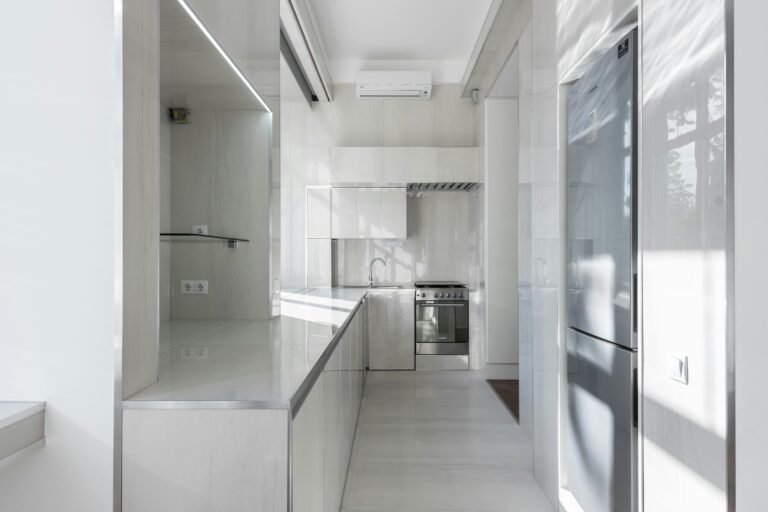The modern executive’s home office isn’t just a workspace—it’s a command center that rivals the Oval Office in both functionality and gravitas. While most remote workers settle for a hastily assembled corner desk and a ring light, today’s visionary leaders understand that true productivity emerges from environments designed with presidential precision. The challenge isn’t simply working from home; it’s creating a sanctuary that channels power, sophistication, and cutting-edge technology into every square inch.
Luxury home office design has evolved beyond ergonomic chairs and dual monitors. We’re witnessing a revolution where interior architects blend centuries-old executive traditions with 2026’s most advanced smart technologies, crafting spaces that command respect in virtual boardrooms while serving as personal retreats for strategic thinking. This transformation requires more than expensive furniture—it demands a complete reimagining of how executive presence translates into residential architecture.
Presidential grandeur meets personal productivity
The most successful luxury home office transformations draw inspiration from history’s most powerful workspaces. Consider the Roosevelt Room’s mahogany gravitas or Churchill’s map-lined war room—these weren’t just functional spaces but psychological environments designed to inspire decisive leadership. Today’s executive sanctuaries channel this same authority through carefully orchestrated design elements.

This Photo was taken by Mikhail Nilov.
Visionary designers begin with what they call the “power axis”—a strategic arrangement that positions the executive’s desk to command the entire room while maintaining clear sightlines to entrances. This isn’t mere feng shui; it’s psychological architecture that instinctively communicates authority to anyone entering the space, whether in person or via video conference.
Material selection becomes crucial in establishing this presidential atmosphere. Top-grain leather, hand-selected exotic woods, and museum-quality stone create tactile experiences that reinforce the space’s gravitas. The most successful designs incorporate at least three natural materials, creating visual and textural complexity that photographs beautifully on camera while providing sensory richness during long work sessions.
Architectural elements that command attention
The transformation begins with ceiling architecture. Coffered ceilings, crown molding, and strategic beam placement create the vertical drama essential for executive presence. These elements serve dual purposes: they provide acoustic benefits for video calls while establishing the room’s importance within the home’s hierarchy.
Built-in millwork becomes the backbone of these executive sanctuaries. Custom bookcases, integrated filing systems, and concealed storage maintain the clean lines essential for video conferences while providing practical organization. The most innovative designs incorporate hidden compartments for personal items, ensuring the space maintains its professional gravitas even during impromptu calls.
Technology integration that remains invisible yet omnipresent
The hallmark of exceptional executive home offices lies in seamlessly integrating advanced technology without compromising aesthetic sophistication. The best installations make cutting-edge capabilities appear effortless, as if the room naturally possesses intelligence rather than being filled with gadgets.

This Photo was taken by Drew Williams.
Smart glass panels have revolutionized privacy control in luxury home offices. With voice commands or smartphone apps, executives can instantly transform transparent walls into opaque barriers, controlling both privacy and lighting conditions. This technology proves particularly valuable for homes with open floor plans, allowing the office to maintain connection with family spaces while establishing clear professional boundaries when needed.
Motorized furniture represents another breakthrough in executive office design. Sit-stand desks, adjustable monitor mounts, and retractable keyboard trays respond to voice commands or preset schedules, optimizing ergonomics throughout the day. The most sophisticated systems learn individual preferences, automatically adjusting workspace configurations based on calendar appointments and work patterns.
| Technology Category | 2025 Integration Level | 2026 Advancement | Executive Benefit |
|---|---|---|---|
| Voice Control Systems | Room-specific commands | Predictive automation | Hands-free productivity |
| Lighting Management | Circadian rhythm sync | Emotion-responsive adjustment | Enhanced focus and energy |
| Climate Systems | Zone-based control | Biometric optimization | Personalized comfort |
| Security Integration | Biometric access | Behavioral pattern recognition | Confidentiality assurance |
Audio visual mastery for global leadership
Executive video conferencing demands broadcast-quality production values. Professional-grade cameras, hidden behind decorative panels, emerge silently when activated. Multiple camera angles allow for dynamic presentations, while advanced lighting systems eliminate shadows and provide flattering illumination regardless of natural light conditions.
Acoustic engineering becomes paramount in these spaces. Sound-absorbing materials hide within decorative elements—fabric panels masquerade as artwork, acoustic tiles blend seamlessly with ceiling designs, and strategically placed furnishings control reverberation. The goal is studio-quality audio capture that makes every word clear and commanding.

This Photo was taken by Tima Miroshnichenko.
Biophilic luxury that enhances cognitive performance
The most transformative executive offices incorporate living elements that boost mental acuity while maintaining sophisticated aesthetics. This isn’t about placing a plant on the windowsill—it’s about integrating nature as a fundamental design element that enhances cognitive function and reduces stress.
Living walls, when properly integrated, provide both visual drama and air purification. The most successful installations use automated irrigation and specialized lighting to maintain perfect plant health year-round. Species selection focuses on varieties that thrive in controlled environments while offering varied textures and subtle color variations that prevent visual monotony during long work sessions.
Water features add acoustic masking and psychological comfort. Custom fountains, integrated into wall systems or desk designs, provide gentle sound that masks outside distractions while creating a sense of tranquility. The sound of flowing water has measurable effects on stress reduction and mental clarity—qualities essential for executive decision-making.
Natural light orchestration
Window treatments in executive home offices require sophisticated engineering to balance natural light, privacy, and video conference requirements. Automated systems adjust throughout the day, maintaining optimal illumination while preventing screen glare and ensuring confidential conversations remain private.
Skylights, where architecturally feasible, provide overhead illumination that reduces eye strain and creates an sense of spaciousness. Smart glass technology allows these features to be dimmed or tinted remotely, providing perfect lighting conditions for any situation.

This Photo was taken by Photo By: Kaboompics.com.
Security and privacy in the digital executive age
Modern executive home offices must function as secure command centers capable of handling sensitive information and confidential communications. This requires both physical and digital security measures integrated seamlessly into the space’s design aesthetic.
Biometric access controls replace traditional keys and codes. Fingerprint readers,


